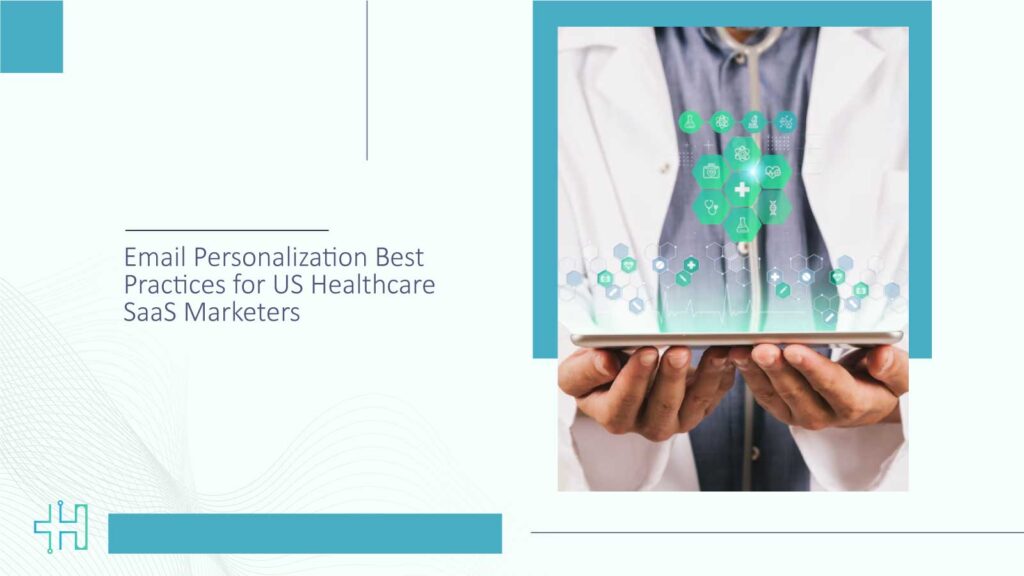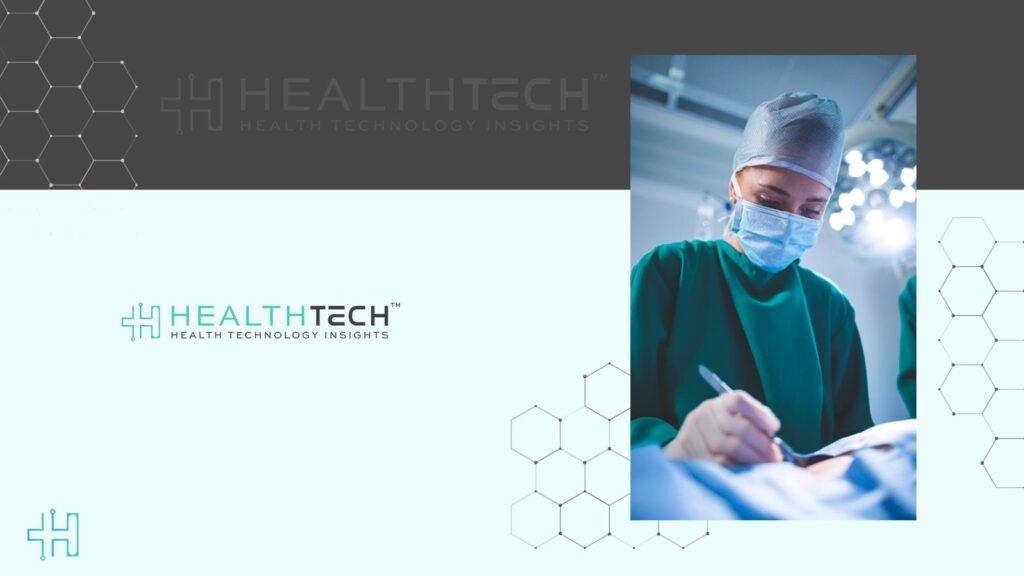When was the last time you replied to a generic sales email? If you’re like most people in healthcare, it probably went straight to the archive if it wasn’t filtered out first. You’re not alone. In today’s healthtech landscape, even the most polished outreach gets buried unless it’s highly relevant. That’s why email personalization for healthcare is the new standard.
Especially when you’re targeting overloaded CIOs, IT directors, or operations leaders who see a flood of one-size-fits-all messages daily. Now imagine your potential customer as an overworked hospital CIO, a VP juggling staffing gaps, or a compliance-first CISO wading through the same sea of bland outreach, day after day. This is exactly why email personalization for healthcare is a lifeline for connection in a saturated inbox.
It’s not long pitches or clever CTAs, but context and timing. Its relevance. It’s understanding the person behind the professional title. Whether you’re just starting in healthtech or refining a seasoned SaaS strategy, this guide offers the kind of personalization tactics that don’t just increase open rates, they build trust. In healthcare, that’s everything.
Why Email Personalization for Healthcare Works
We live in an era where 74% of B2B buyers expect personalization in outreach, according to Salesforce. But in healthcare, it’s more than an expectation; it’s table stakes. Health leaders operate in a high-stakes, high-regulation environment. They don’t have time for fluff.
So, when you tailor an email to their role, their organization, or their moment? It shows you respect their bandwidth. And that earns attention.
1. Know More Than Their Job Title
Before you write a word, pause. Who are you talking to? What pressures are they under? What’s changed for them this year?
Using intent data tools like 6sense or Bombora can help you go deeper. Maybe a hospital is expanding into rural care or has recently implemented Epic. That’s gold. Reference it.
A McKinsey study found that emails tied to real-time intent can boost conversion rates by up to 40%. That’s not a small lift, it’s a strategy shift.
2. Speak to the Role, Not Just the Company
It’s tempting to send the same message to everyone in the same hospital. Don’t.
- A CIO wants seamless integration, cybersecurity assurance, and measurable ROI.
- A CMO is focused on outcomes, readmission rates, and care team coordination.
- A Chief Nursing Officer is watching for anything that reduces nurse burnout.
Try this: “Your recent investment in mobile-first patient support tells me care access is a top priority. Here’s how we’re helping CIOs deliver faster rollouts without the IT headache.”
That’s the difference between getting deleted and getting a meeting.
3. Behavioral Personalization Beats Static Segmentation
If someone viewed your patient engagement case study three times last week, that’s not just a visit; it’s a signal.
Respond with context like this: “Saw you took a look at how Mercy Health improved discharge coordination. Happy to send a 2-minute video walkthrough if helpful.”
HubSpot reports that behavior-based emails get 14% higher CTRs than static campaigns. Imagine the impact of a full pipeline.
4. Write Like a Human, Not a Marketing Automation Tool
Healthcare professionals have a finely tuned BS detector. They know when a message was mass-blasted.
Avoid robotic phrasing like: “Hi [First Name], I noticed you’re the [Job Title] at [Hospital Name]…” Instead, write as if you’re reaching out to a peer.
Try: “I caught your recent quote in Healthcare IT News. Your point about EHR fatigue is spot-on. We’ve been helping other systems streamline those pain points, no rip-and-replace needed.”
Authenticity beats algorithms.
5. Test More Than Just Subject Lines
Most marketers A/B test subject lines. But what about your first sentence? Your CTA phrasing? Or your sign-off?
B2B emails under 125 words had a 9% reply rate, which is nearly twice as high as the average for longer outreach emails, according to a recent Belkins study. Busy healthtech professionals can respond more quickly to shorter emails since they cut through inbox clutter.
Why? Because it respected their time and invited curiosity.
The takeaway: Experiment like a scientist. Talk like a person.
6. Compliance and Compassion Can Coexist
Healthcare marketers often walk on eggshells, trying not to say the wrong thing. Yes, HIPAA compliance matters, but it’s not a wall.
You can still personalize with empathy. Focus on public data, behaviors, and industry-relevant trends.
Instead of: “We can help your hospital achieve 10 times more ROI.”
Try: “We’re helping health systems like yours free up 6+ hours a week for care teams without adding to their admin burden.”
That speaks volumes without crossing lines.
7. Don’t Push. Invite.
A good CTA is less “sales funnel” and more open door.
Wrong approach: “Book a 30-minute call this week.”
Better approach: “Would a quick walkthrough help show how we reduced ED wait times by 22% for another regional provider?”
See the shift? You’re offering value. Not assigning homework.
Healthcare Global Enterprises (HCG): Personalized Care and Patient Engagement
Although the focus of this example is patient communications, its ideas are similar to those that are most effective in B2B healthcare SaaS outreach.
What they carried out:
Using Salesforce Health Cloud and Marketing Cloud, HCG, a network of 25 hospitals with over 200,000 cancer patients annually, created a 360° patient view and sent highly contextualized messages.
Response time to patient questions decreased from 45 minutes to 23 minutes, a 49% speedup. 90% of service inquiries are answered in less than five minutes. To prompt, stage-specific information, more than 75% of patients remained involved after their visit.
The Future Is Personal and Purposeful
We’re moving toward an age where AI helps us scale personalization, but human insight still sets the tone. In 2025, inboxes will only get louder. But marketers who listen more, speak authentically, and lead with value will still stand out.
Here’s a simple check: Would you open and respond to the email you just wrote? If yes, you’re doing it right. If not, pause. Personalize. Try again.
FAQs
1. What type of data is safe to use for personalization in healthcare emails?
Stick to publicly available info like job titles, press releases, and digital behavior. Avoid referencing protected health data unless explicitly permitted.
2. How often should I update my personalization strategy?
Quarterly is a good cadence. Buyer needs to evolve fast in healthcare, stay agile, and adjust based on engagement trends.
3. Can AI-generated emails still feel personal?
Yes, but only with human review. Use AI for drafts, then humanize for tone, empathy, and nuance.
4. What personalization mistakes should I avoid?
Avoid overused merge tags, irrelevant references, or forcing familiarity. If it feels awkward, it probably reads that way, too.
5. How can I scale personalization without burning out my team?
Use tools like Outreach or Salesloft for dynamic fields, combined with account-based templates. Build libraries of modular messages based on roles and triggers.
Dive deeper into the future of healthcare.
Keep reading on Health Technology Insights.
To participate in our interviews, please write to our HealthTech Media Room at sudipto@intentamplify.com




